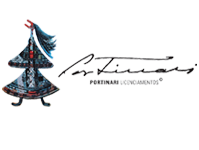General Info
Title
Country Dance
Description
Composition in earthy, ochre, rose, gray, black, red, green, blue and yellow tones. Smooth texture. Transparency effects; tones and halftones obtained using broad strokes, which interpenetrate and overlap. Light falling from the left, stronger on top left half of the composition and more diffuse on the right half. It depicts a peasant dance, especially two couples dancing to an black accordionist, a man sitting at the table and other figures dancing in the background. In the foreground, on the left, couple dancing, profile: her on the left and him on the right, both with his face forward. The man's arms involve the woman's waist and she holds his arms almost at the shoulder. She wears long dress with a waist sash and a headscarf, with tip falling on the right shoulder. He has mustache, wears wide-brimmed hat, jacket lighter than pants and neckerchief. In the center of the composition, another couple dancing: her front is 3/4 toward to the right and he is facing back and 3/4 to the left. The woman is blonde, has slicked-back hair and wears a long dress with waist sash. The man has wide-brimmed hat, wears jacket lighter than the pants and scarf on the left breast pocket with the tip hanging out. Still in the foreground is a woman figure cut by the left edge of the support, turned back, 3/4 to the left, with green headscarf and long dress. In the background, in the center to the right half of the composition, on a dais, a man sitting in chair with feet, 3/4 facing left, playing accordion. This figure has hair, mustache and white beard, wears vest, long-sleeved shirt and dark pants. On the right edge of the support, another man sitting in a chair, left leg crossed over the right and toe raised to the left, with a table to his right. He is smoking a pipe, has a beard and mustache, wears a hat and scarf around his neck, pants and jacket. Behind to the right of the accordion player, a black figure standing, with the torso down, covered by accordionist, facing 3/4 to the left, looking forward and wearing a wide-brimmed hat. The dais, an apparent step, defines the space of the accordion, the black man and the man with the pipe. In the third plane, crowd effect obtained through the representation of a couple and a woman with braids, slightly set amid several strokes that suggest figures from other dancing couples. At the upper right corner, the darker area suggests a door. Plain background.
Author
Historical Info
This was Portinari’s first work with a Brazilian theme. The characters depicted are from Brodowski: the accordion player was called Marchesan and the black man João Negrinho; the man with a pipe was possibly the artist’s father, and the model for the other characters, both male and female, was the artist’s sister, Maria Portinari Carvalho. In 1924, Portinari submitted the work along with seven portraits to the Conselho Superior de Belas Artes at the Escola Nacional de Belas Artes as entries in that year’s Exposição Geral. The selection panel rejected "Baile na Roça," however, accepting only the portraits. Immediately afterward, the young, disgruntled artist decided to sell the painting. The episode left a profound impression on Portinari, as revealed six years later when, from Paris, he wrote to his ENBA colleague Rosalita Mendes de Almeida: "... From here I’m coming to see my home better – I’m seeing Brodowski as it really is [...] When I started painting, I felt like I should paint my people and I did ‘Baile na Roça.’ Then they got me off track and I started groping around and painting everything by heart and painted a bunch of portraits, but I never felt inspired to work and everybody called me lazy. I didn’t feel inspired to paint because they stuck me in a carpeted room with people dressed up in the latest fashion. The place where we first played and the people we first talked to, that doesn’t ever leave you, so when I get back I’ll see if I can’t paint my home." [CO 4545]. Portinari tried to recover this work throughout his entire life, but he died with the disappointment of never having found it. He did keep a small photograph of it, however, which was released to the press in 1980, enabling the Portinari Project to locate the work.
About
Themes
Support and Technique
Authenticity
Certificate
1422
Dimensions
Height (cm)
97
Width (cm)
134
Signature and annotation
Annotation
Signed and dated at bottom right "C Portinari 924" and on reverse of support "C. Portinari Brodowsky, 1923-24"
Annotation Others
On reverse, inscription "26”. On stretcher, inscription "57554 [illegible]”. On back of frame, inscriptions "1,34 x 98” and "52514”; stamp "DOMINGOS MARTINS E CIA RUA SENADOR POMPEU, 10 – RIO TEL 43-9841 INDUSTRIA BRASILEIRA”; illegible stamp with handwritten numbers "52514” and "25628”.
Notes
Signature on back of support is upside down and scratched out.
Relations
Related Document273
Related Event8















